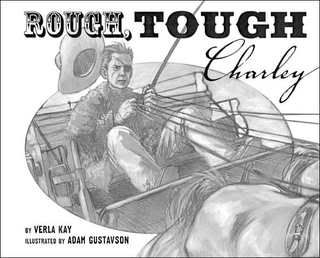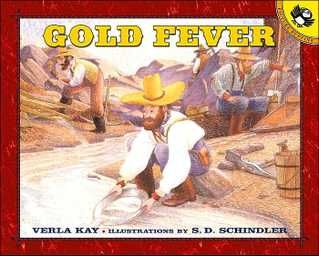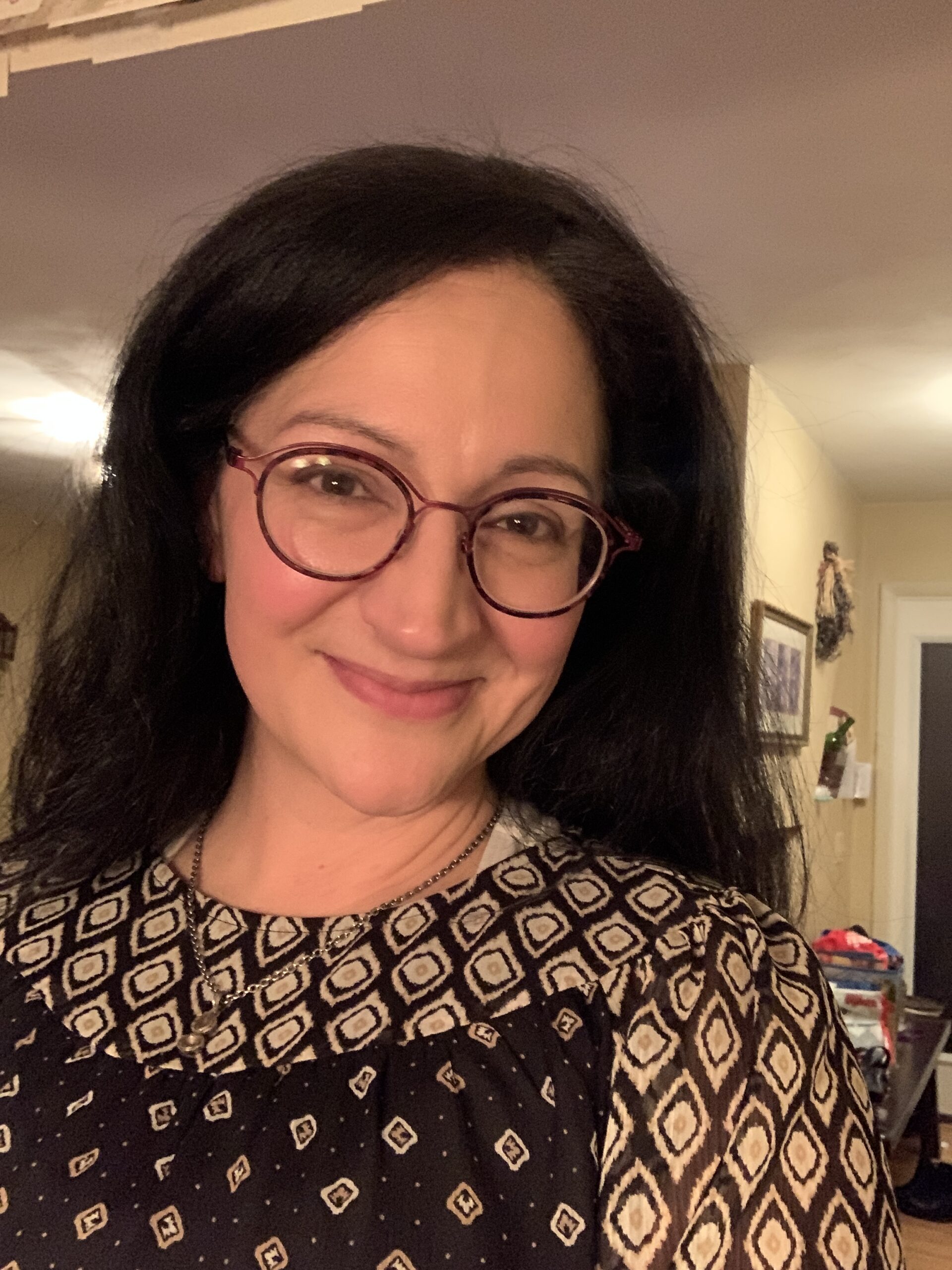INTERVIEW: Verla Kay, Part 2
By Therese Walsh | May 16, 2008 |
 Verla Kay is the author of nearly a dozen children’s picture books and an innovative marketer, having termed the phrase “cryptic rhyme” to describe her smart, lean style. If you missed part one of my interview with her, click HERE, then come back. Today we chat about publicity all authors can benefit from and some of the great misconceptions about writing for children. Enjoy!
Verla Kay is the author of nearly a dozen children’s picture books and an innovative marketer, having termed the phrase “cryptic rhyme” to describe her smart, lean style. If you missed part one of my interview with her, click HERE, then come back. Today we chat about publicity all authors can benefit from and some of the great misconceptions about writing for children. Enjoy!
Interview with Verla Kay: Part 2
Q: Tell us how you’ve promoted your work and yourself. What promotional steps did you take prior to publication, and what have you done since?
A: I started my website. It’s grown to be huge since I first put it up. The most used feature on it is the Children’s Writing & Illustrating Message Board. That board, where writers and illustrators go to share information, has gotten between 600,000 and 800,000 hits per month for a full year now (except for last May when it only got 595,500+ hits! Hmph!) It’s a very busy message board.
School visits and author talks are another way I’ve promoted my books. I love to do them and eagerly embrace invitations to come and speak anywhere I’m invited. A few talks I give locally for free to help out my community. A larger number of talks are done close to home for a reduced fee — again, to help out my community. One of my favorite places to speak is at library and educational conferences. The teachers always seem to “get” my books and they love having them in their classrooms. Speaking to other writers is another of my great loves. It’s so fun to share my love of writing stories for kids with other writers.
Q: What do you believe every writer must do to promote him or herself? And what promotional steps might a writer consider to go “above and beyond?”
A: You need to help your publisher by making a name for yourself. That only comes with time and “getting out there” in the public eye. When I first started out, I did a lot of free talks and talks for nearly nothing, just to get myself noticed. Learn to give a dynamic, fun presentation and you will find yourself becoming in demand. Ask your publisher if they will produce bookmarks or fliers or postmarks for you to distribute. Check out all the local and regional (as well as national) contests and awards and see if your book is eligible for any of them. If it is, be sure to send the entry information to your editor (or publicity person at your publishing house.) Any effort you make is better than none. There’s nothing sadder than to struggle for years to get a book accepted, wait for possibly several more years for it to come out, and then have it go out of print within months of its debut! It’s enough to take the heart right out of you….
Q: What are some of the biggest misconceptions about writing for children?
A: 1) Children’s authors make a lot of money. Ha ha ha ha ha ha ha! Very few children’s authors can support themselves on the proceeds of their books alone. Most authors make the majority of their money through author talks.
2) If you write picture books, you need to find an illustrator for your stories. Most publishers want to pick their own illustrators. Often they will pair up an unknown author with a well-known illustrator, as it gives a book a built-in audience and helps with the sales of the book.
3) It’s much easier to write for children than for adults. In truth, it’s often much harder, because you not only have to pack more story into fewer words, but you have to be more careful to be totally accurate in everything you portray to children — because unlike adults, they believe what they read in books! If you give inaccurate information, even if it’s in the background of a story, they may carry that misconception with them most of their lives.
4) Picture books are easy to write and can be done in a day or two. Not so. In a picture book, every single word has to carry a lot of weight. (Remember my example of the first verse in Gold Fever: Dashing westward,/Many miners./Townsfolk snicker,/Forty-niners.) It can take a lot of time to find all of those perfect words, and get the cadence and rhythm of a picture book text perfectly written, and, yes, even if they aren’t written in rhyme, there’s still a smoothness to the text of a picture book story that is vital to the success of the book.
5) You can whip out a children’s story, send it off, and it will get accepted immediately. The reality of this business is that it takes most writers between 5 and 10 years — or even longer — before they get published. It normally takes that long to get a manuscript perfected and then find the right publisher for it.
Q: I recently read an article, “Does ‘Lotsa de Casha’ for Madonna Mean Lessa for Other Children’s Authors?” What are your feelings about celebrities and children’s books? What of the discrepancy in pay?
A: While I feel very sad about some of the quality of some of those books, they at least open up awareness of books for kids in the minds of many people. Often they have good sales, even though the quality of books might not be as high as ones written by dedicated children’s writers who have been learning their craft and practicing for many years. The money those celebrity books bring in can be what allows publishers to “take a chance” on an unknown author — you and me. So in that respect, it’s a good thing.
Q: If applicable, what (other) industry changes would you like to see?
A: One of the biggest changes has already taken place in the past ten years — that of publishers accepting multiple submissions. Most of them don’t require an exclusive anymore, which is wonderful for writers, considering the length of time it often takes publishers to respond to a submission.
I’d love to see higher royalty rates for authors. I’d like to see much higher advances up be the “norm” for all books. I’d like to see fair option clauses in contracts. And I wish editors would stay in one place long enough for authors to build a real relationship with them! I’ve been extremely lucky, in that I’ve had the same editor for most of my books since day one. But most authors I know are not that lucky.
Q: Another recent article, “Children’s books ‘are purged of risks,” reveals that some editors censor books in order to assure political correctness and show characters behaving safely. For example, editors nixed a scene during which a dragon roasts marshmallows with his own fiery breath because it’s not safe; removed a child from a ladder; and did away with a Ouija board. What do you think about these sorts of changes? How far should an author go to assure political correctness, safety and health measures in their writings?
A: Ohhhh, I hate the words “political correctness!” A good story is a good story, and sometimes you just can’t write a good story without stepping a bit on someone’s sensibilities. What really upsets me is when people want to instill our values today onto historical stories. You can’t tell a story accurately from the past if you don’t tell how it was back then. The Chinese were abused and mistreated when the transcontinental railroad was being built and when the gold rush was taking place out west. People drank and smoked and chewed tobacco. They swore and wore guns and didn’t have all the laws and regulations we have now. It was a different time, a different “mind-set” back then. How can kids today understand what it was like to be a black person in the days when blacks were not allowed to drink out of the same drinking fountains or live in the same neighborhoods as white people if we have to be “politically correct” in our stories? That’s not to say I think we should promote racial discrimination in our stories. Not at all! But I think too much emphasis is being put on the “political correctness” of stories and not enough on the stories themselves.
 Q: What has surprised you the most about this business?
Q: What has surprised you the most about this business?
A: How LONG everything takes! From writing the stories, to getting replies, to getting a story published after it’s accepted, to getting royalties for the stories, to “making a name” for yourself — everything moves so horribly slowly in this business!
Q: What advice would you offer an aspiring children’s book author?
A: Learn all you can about your craft. Learn the “rules” of publishing for kids — and then go out and write what you have to write. If you feel it’s good, really good, don’t ever give up. Sometimes it’s not the best writers that get published — it’s the writers who kept on submitting year after year.
Q: What would people be surprised to know about you?
A: I’m actually very insecure around people.
Q: What drives you?
A: I’ll be darned if I know.
Q: Which authors have been your inspirations? What are your favorite (children’s and other) books?
A: Linda Joy Singleton, author of both The Seer and Strange Encounters series has been the most influential author in my life. When I first started writing, I saw her regularly at conferences and used to follow her around like a groupie. She was so successful (in my eyes) and such a wonderful writer! I loved her books then and I still love them today. She’s an incredible writer — and if you haven’t read any of her books yet, DO.
When I was feeling low from rejections and people told me I shouldn’t be writing what I was writing, she was always there to pick up my spirits and cheer me on. I consider her my very best writing friend of all. She’s a true treasure, in my eyes.
The Oz books. They were what turned me on to reading as a child — those and Nancy Drew. My favorite current books are the Harry Potter series and, of course, I love all of Linda Joy Singleton’s books.
Q: If you were to write in another genre, which would it be and why?
A: Probably regency romances or science fiction because those are two genres I love to read for pure relaxation in my leisure time. (Wait a minute! Did I just say, “…in my leisure time?” What the heck is that? Ha ha ha!)
Q: What’s next for you?
A: I’ve written a fun, rollicking pirate story I absolutely LOVE called, Yo, Ho, Ho! I’m Pirate Joe that I would LOVE to see get accepted for publication. It would be such a joy for me to have one book that wasn’t history, wasn’t serious, but that was just plain FUN to read to kids. I’m also working on a revision of a story I wrote based on my recent trip to China. It’s great so far and has wonderful details of what it feels like to visit China … but it doesn’t have enough “story” in it to submit yet. I’m still working on that and when I get it perfected, it will go to my agent.
The other thing I’m working on is a very special story. It’s probably closer to my heart than anything I’ve ever done because it’s my dad’s WWII POW story. He was shot down over the Mediterranean Sea during the second world war, and after escaping for a few days from the Italians, he ended up in a German prison camp for nearly two years. I have the diary he kept while he was there, all his war medals and flight wings, the telegrams my mother got that said he was missing in action, was a prisoner of war, and was coming home. I have many, many prime source materials to work with, including a book printed by and for the men who were in that prison camp — a book that was distributed only to the men who were in the camp. It’s filled with photographs of the men and the camp and is extensively written to detail every aspect of their daily life in the camp. Which reminds me… my agent is waiting for my proposal for this story. I should be working on that instead of doing this interview. But… I have to admit, doing the interview was even more fun than working on my book. :)
Thank you for letting me share some of my writing journey with your readers. It was fun!
Thank you, Verla, for a great interview, and best of luck with your next works!










great interview – thanks WU! Verla Kay is a very interesting person and author. good insights into the children’s book world. thanks
Fantastic interview, Therese. Lots of nuggets here.